Editor’s Note: This article about brandishing a firearm is not legal advice and does not necessarily represent the views of The Armory Life. You should always consult local laws and qualified legal counsel regarding any questions you have about firearms, deadly force and self-defense.
Choosing to carry a weapon for self-defense is a serious one, and one that calls for a balance of skill and discretion. On this topic, I was asked to do an article for The Armory Life to explain what “brandishing a weapon” was and how it might imperil a normally law-abiding citizen — or law enforcement officer — should they “brandish” a firearm or other weapon that could cause serious physical harm or lethal injury.
Those other weapons include, but are not limited to, a wide variety of items originally designed as weapons or adapted for use as a weapon such as such as knives, swords, baseball bats or tire irons, or defensive weapons such as batons.
What Is Brandishing?
“Brandishing” means to draw or present a weapon in a threatening manner or use it in a fight. According to Etymonline, the word brandishing comes from the French word “brandiss”, meaning to move or raise, with the implication being it is a weapon such as a sword. Brandishing does not imply that the weapon in question was actually used for the purpose of causing injuries, but rather it is merely displayed with the implication of threat.
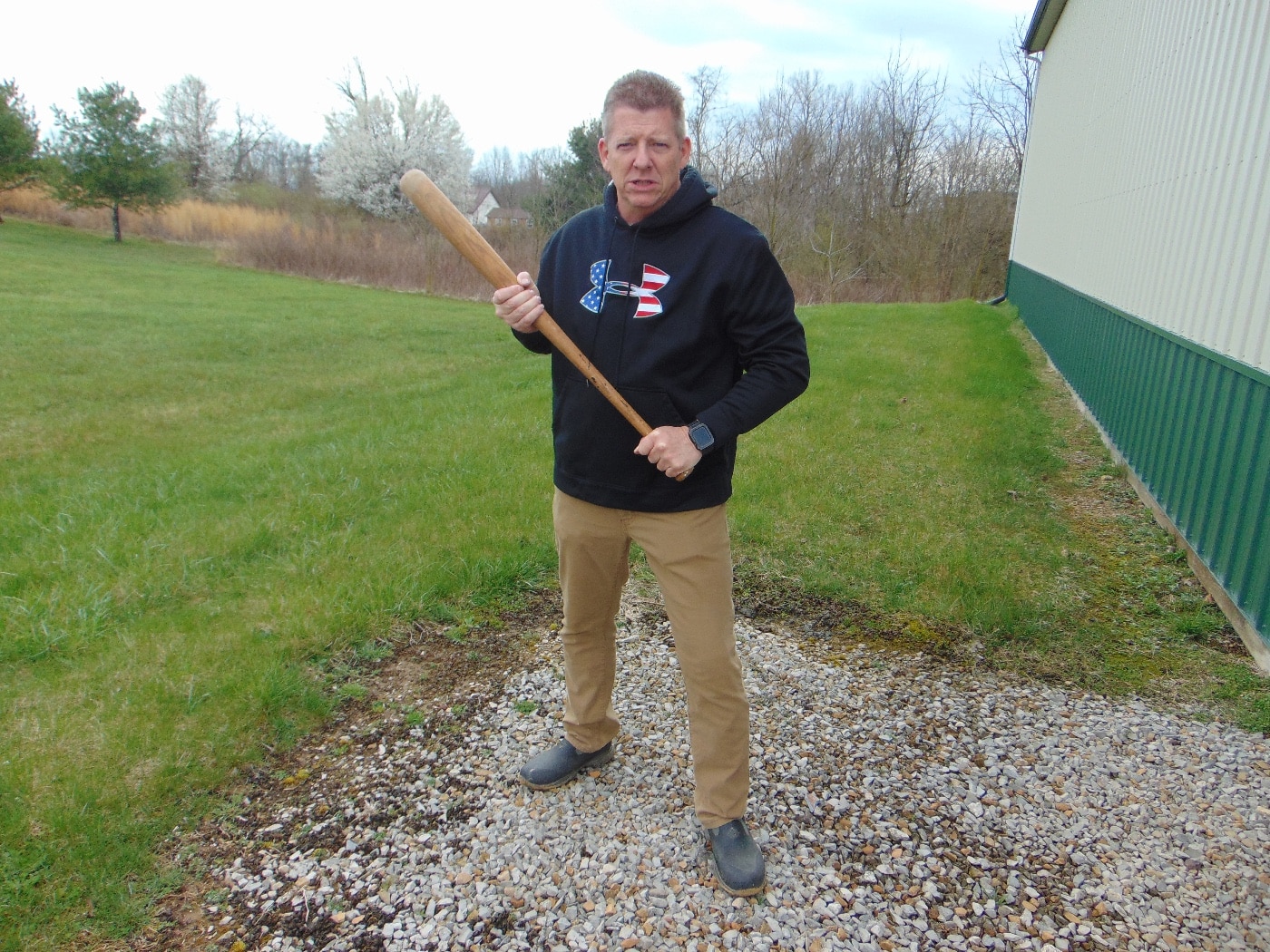
I served for 40 years in Ohio law enforcement — in four different agencies in county, state, suburban and village roles — starting in 1980. In all that time, I never made an arrest for someone brandishing a weapon.
This was not because it never happened in cases in which I was involved. Rather, I never made an arrest for brandishing because in Ohio we don’t have an actual law against it. What we have instead is enhancement of weapons-related sentencing under Ohio Revised Code Statute 2941.145.
To wit:
(A) Imposition of a three-year mandatory prison term upon an offender under division (B)(1)(a) (ii) of section 2929.14 of the Revised Code is precluded unless the indictment, count in the indictment, or information charging the offense specifies that the offender had a firearm on or about the offender’s person or under the offender’s control while committing the offense and displayed the firearm, brandished the firearm, indicated that the offender possessed the firearm, or used it to facilitate the offense. (Effective September 14, 2016)
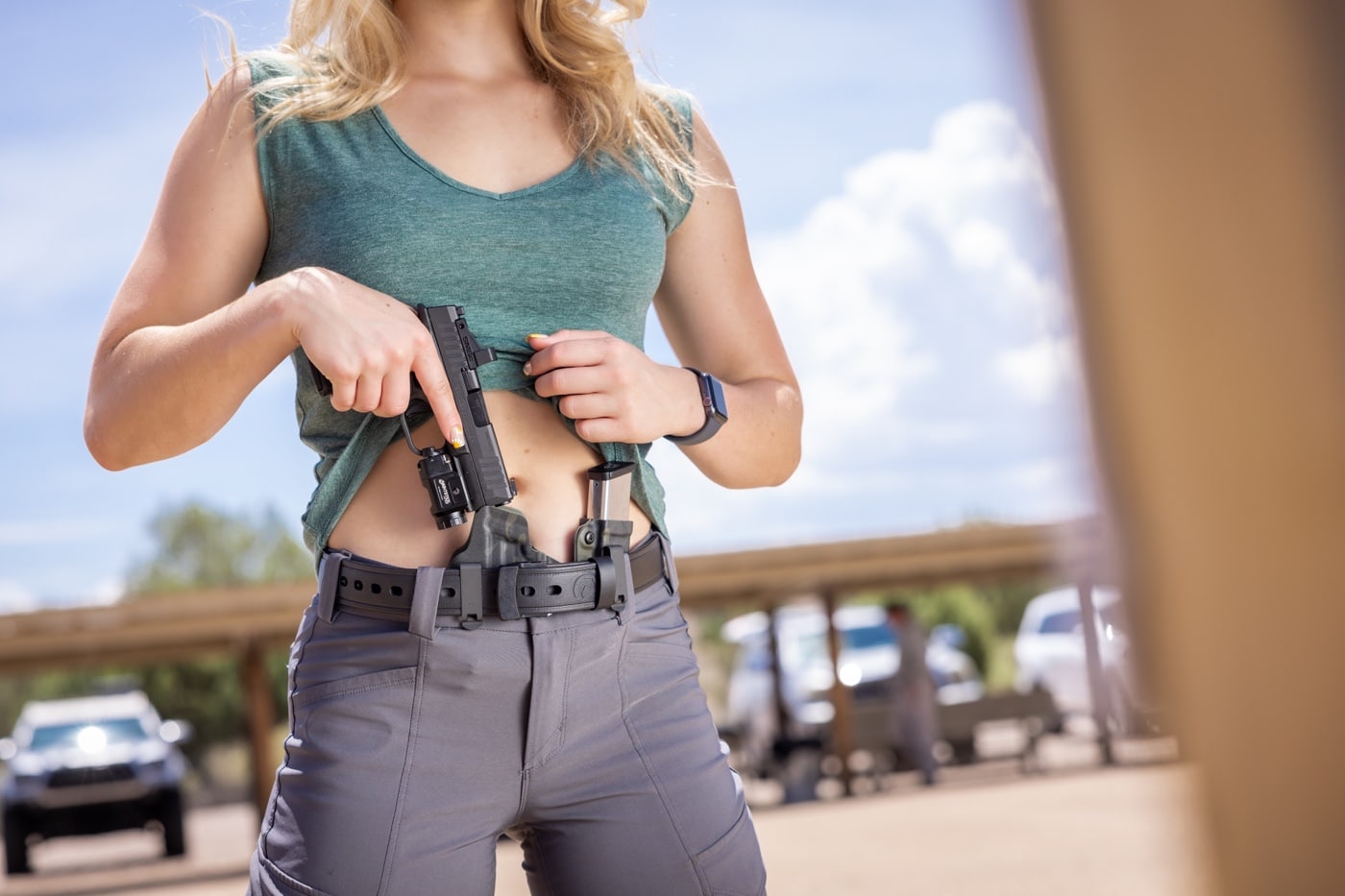
In a number of other states, brandishing is a stand-alone crime or act. Here is how brandishing is defined under the California Penal Code;
(CA) 417. (a) (1) Every person who, except in self-defense, in the presence of any other person, draws or exhibits any deadly weapon whatsoever, other than a firearm, in a rude, angry, or threatening manner, or who in any manner, unlawfully uses a deadly weapon other than a firearm in any fight or quarrel is guilty of a misdemeanor, punishable by imprisonment in a county jail for not less than 30 days.
(2) Every person who, except in self-defense, in the presence of any other person, draws or exhibits any firearm, whether loaded or unloaded, in a rude, angry, or threatening manner, or who in any manner, unlawfully uses a firearm in any fight or quarrel is punishable as follows:
(A) If the violation occurs in a public place and the firearm is a pistol, revolver, or other firearm capable of being concealed upon the person, by imprisonment in a county jail for not less than three months and not more than one year, by a fine not to exceed one thousand dollars ($1,000), or by both that fine and imprisonment.
(B) In all cases other than that set forth in subparagraph (A), a misdemeanor, punishable by imprisonment in a county jail for not less than three months.
(b) Every person who, except in self-defense, in the presence of any other person, draws or exhibits any loaded firearm in a rude, angry, or threatening manner, or who, in any manner, unlawfully uses any loaded firearm in any fight or quarrel upon the grounds of any day care center, as defined in Section 1596.76 of the Health and Safety Code, or any facility where programs, including day care programs or recreational programs, are being conducted for persons under 18 years of age, including programs conducted by a nonprofit organization, during the hours in which the center or facility is open for use, shall be punished by imprisonment in the state prison for 16 months, or two or three years, or by imprisonment in a county jail for not less than three months, nor more than one year.
(c) Every person who, in the immediate presence of a peace officer, draws or exhibits any firearm, whether loaded or unloaded, in a rude, angry, or threatening manner, and who knows, or reasonably should know, by the officer’s uniformed appearance or other action of identification by the officer, that he or she is a peace officer engaged in the performance of his or her duties, and that peace officer is engaged in the performance of his or her duties, shall be punished by imprisonment in a county jail for not less than nine months and not to exceed one year, or in the state prison for 16 months, or two or three years.
For California, CA 417 is a pretty easy-to-understand, stand-alone statute defining brandishing. Note that it appears to be a misdemeanor offense unless it involves a peace officer or other special situation such as brandishing occurring at a day care center. But, it appears under CA 417 you have not committed a crime if you brandish a firearm while lawfully defending yourself. Reminder — I’m not an attorney.
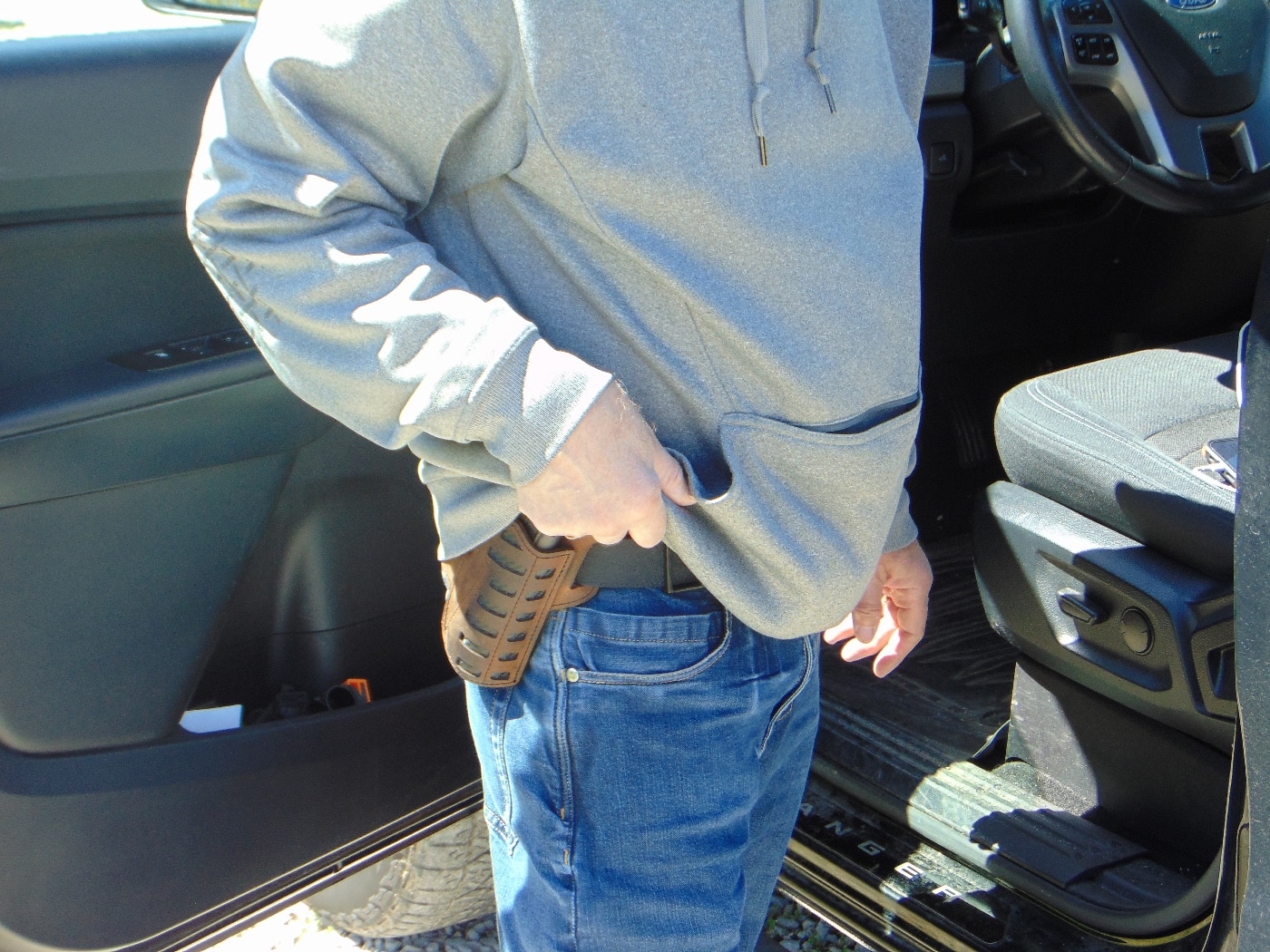
Also of interest in CA 417 is that brandishing a weapon in California is listed as a misdemeanor and is not listed as a felony, although it has felony-type jail/prison sentences available for certain violations. These provisions can earn an offender up to three years in state prison. In Ohio, the maximum possible jail sentence for a misdemeanor is one year, and that sentence must be served in a county jail.
To my mind, the examples of Ohio and California pretty well cover the legal spectrum of brandishing a firearm. Unlike the crime of murder — which has a pretty standard legal definition no matter where you are in the United States — the rules and laws on brandishing can vary widely. It’s very important to get online and look at the definition of brandishing in your own state.
How Does One Brandish a Firearm?
For the purposes of this article, I will consider the act of brandishing as it pertains to firearms. Keep in mind that you can also “brandish” a knife, baseball bat, defensive baton or any potentially deadly or improvised weapon — if those items are being used in an unlawful and threatening manner.
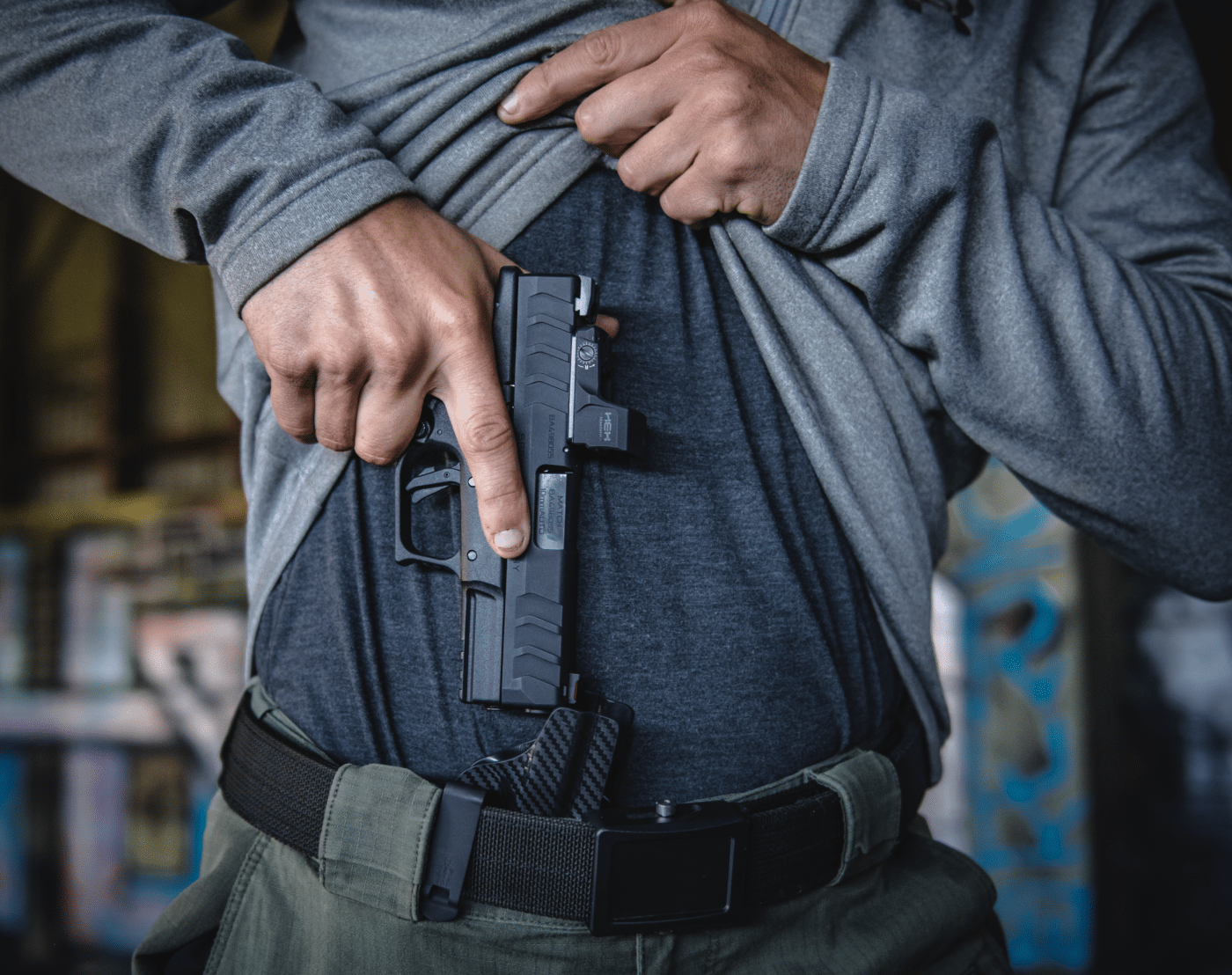
It’s important to remember, too, that there is not necessarily a requirement under brandishing laws that a weapon be pointed directly at someone. What is required is that the weapon be “displayed (to others) in a “rude, angry, or threatening manner.” The emotions and actions on the part of the weapon’s possessor is what changes a “hey buddy, check out my new pistol” moment into a “concern for your life” moment.
“Displaying” a weapon can be as simple as pulling up a covering garment to reveal it, opening a fanny or sling pack exposing a recognizable part of it, or holding it in a position visible to others. Much of what defines brandishing is in the eye of the beholder (observer) and how they felt at the moment. Although I don’t like having video cameras mounted everywhere, they could be useful in dismissing false claims against you — like a claim of brandishing.
Practical Application of Brandishing
Cops are regularly put in situations where they must brandish their firearms. The purpose of doing this is twofold. First, it helps us from being behind on the time curve relative to the threat by eliminating the need to draw it from the holster should the balloon go up. Second, it can be so that the parties involved understand we consider whatever they might be doing as dangerous. Such an increased state of readiness on our part may preclude having to use deadly force.
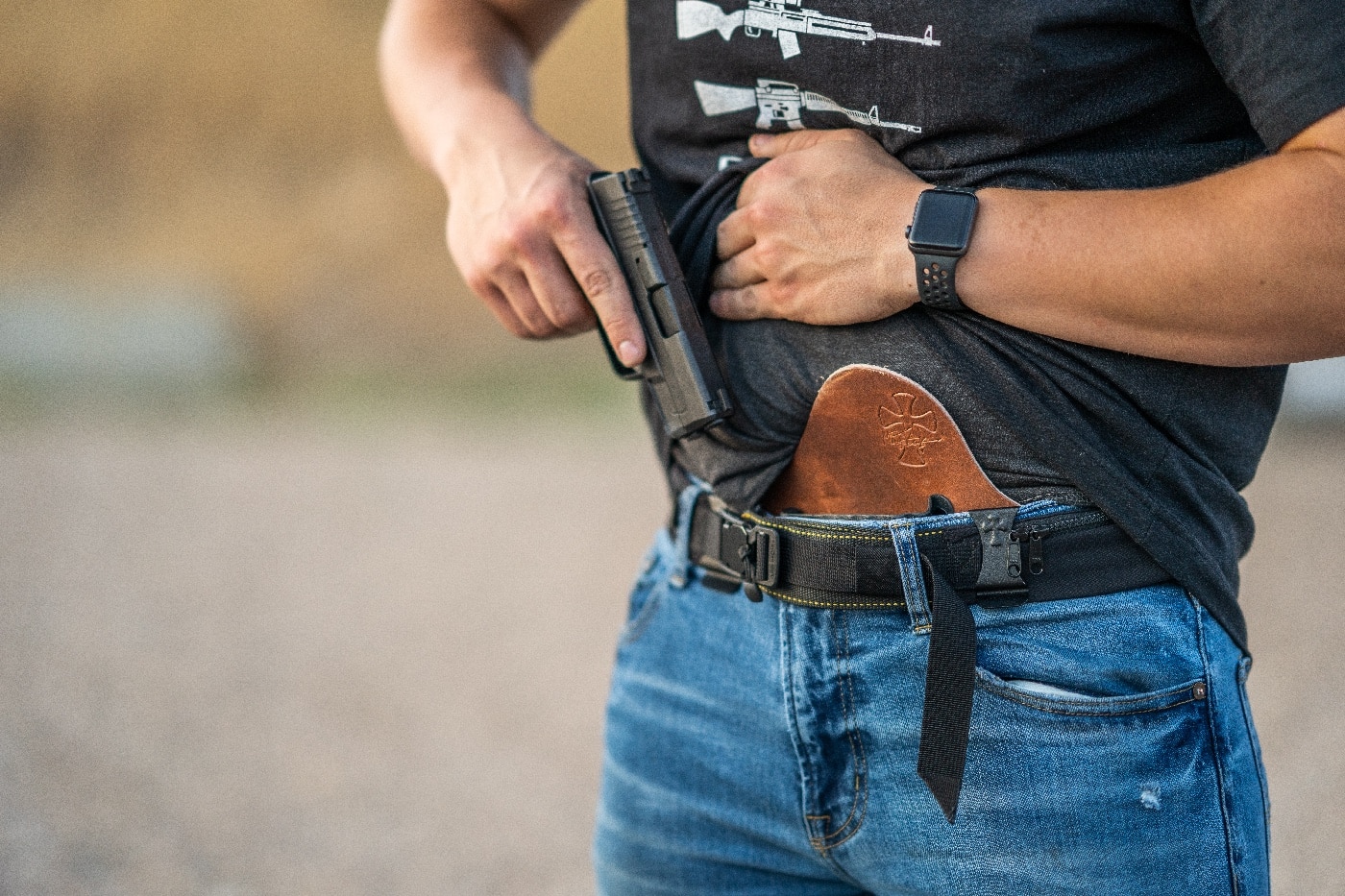
Reducing the need to actually use “at the ready” deadly force is why all but one of my primary defense handguns are equipped with either Crimson Trace Lasergrips or Hogue Laser Enhanced Grips. When directed onto a potentially deadly attacker, the red or green laser dot gives one last warning to an attacker of where a fired round will land. It can take the wind out of their sails without an officer firing a shot.
A similar change of an attacker’s plan can be obtained by drawing your handgun and assuming a preparatory stance. While your gun needn’t necessarily be pointed at the attacker if there is enough distance between you, it must be fully visible or brandished to reverse the trajectory they’re on. It can be visible at your side, or in a low-ready position out in front. When you do this, you want to try and be as calm as possible and warn the person to back off or stop.
Conclusion
As with all things related to CCW and self-defense, you must balance risk versus safety. And always, discretion is extremely important. Avoid putting yourself into a dangerous situation that might force you to defend yourself. And, if you do find yourself in an unavoidable situation, ensure that you have the judgement and skills to make the right decision. Be prepared to defend yourself, but also be prepared to make the right decisions leading up to that moment.
Editor’s Note: Please be sure to check out The Armory Life Forum, where you can comment about our daily articles, as well as just talk guns and gear. Click the “Go To Forum Thread” link below to jump in and discuss this article and much more!
Join the Discussion
Featured in this article
Read the full article here

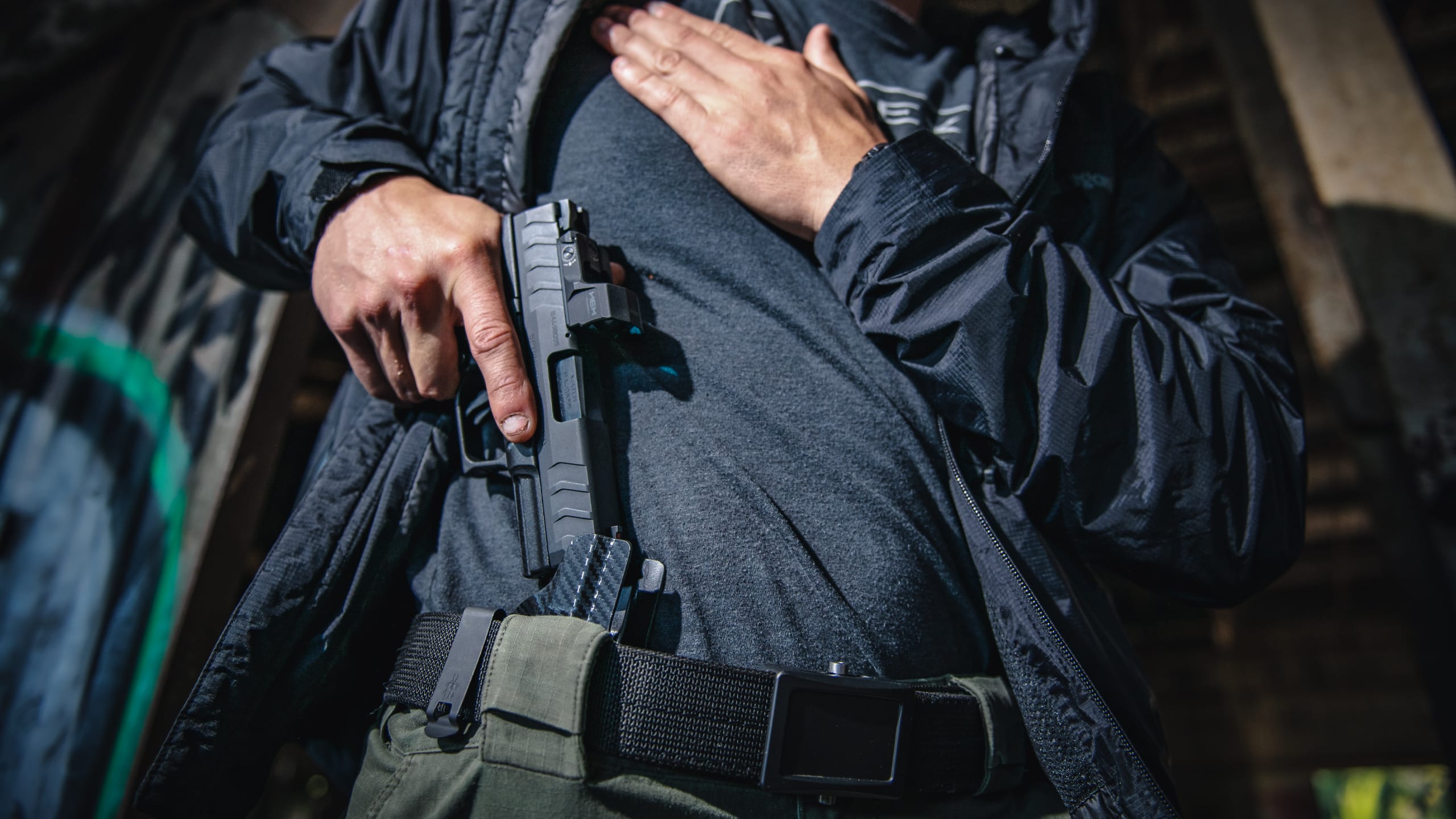






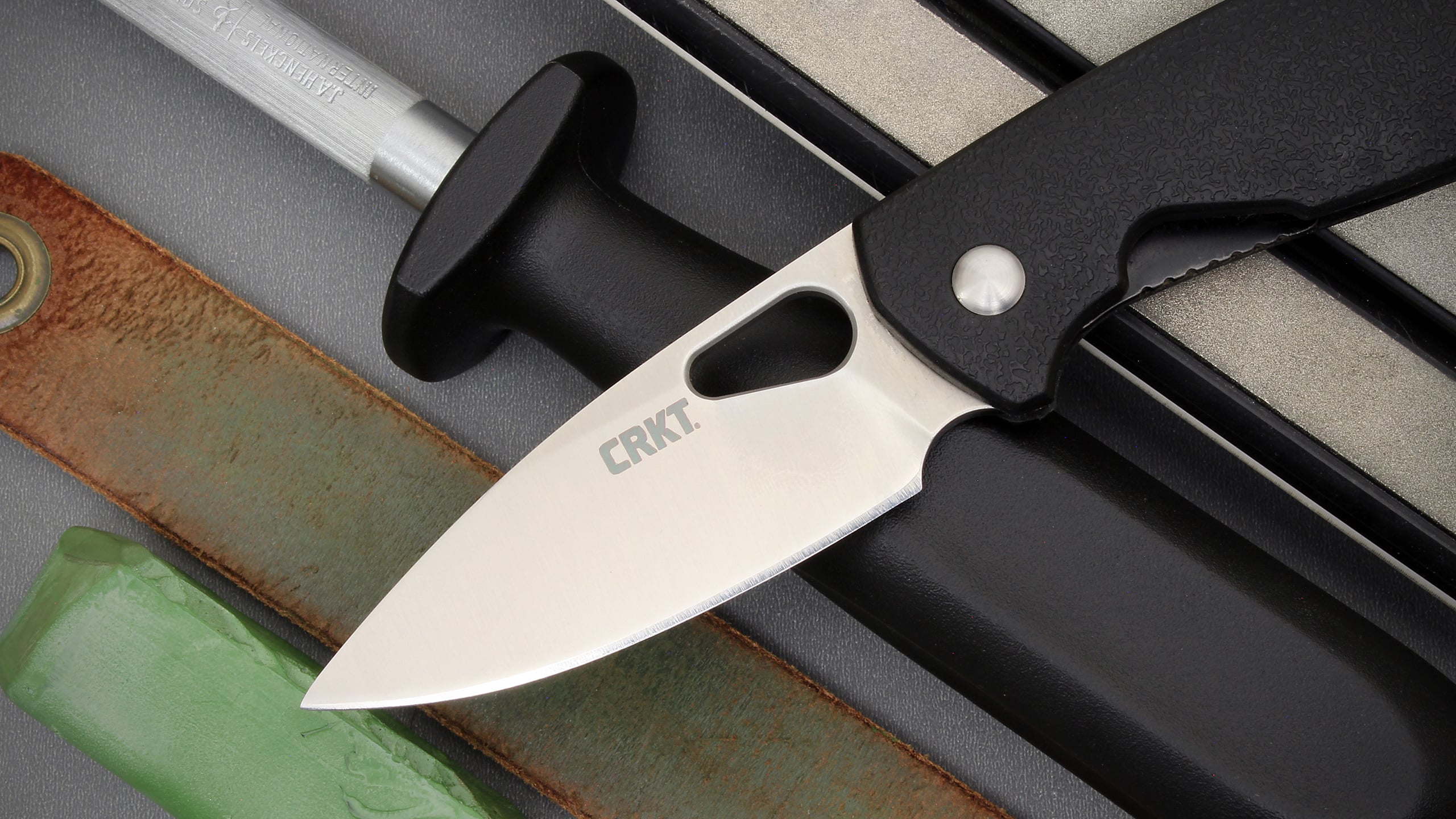





Leave a Reply